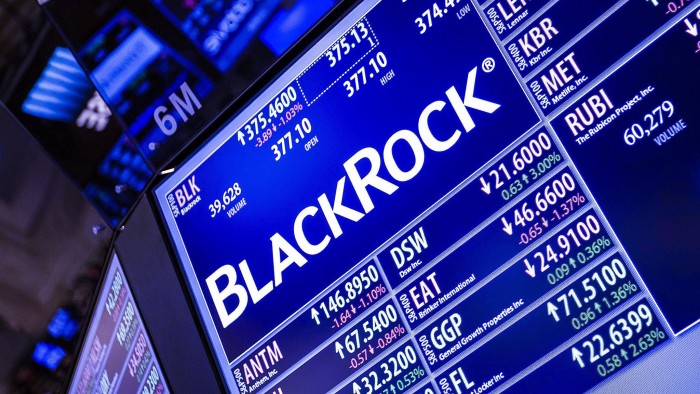Migration to cheaper products upends retirement market

A mass migration from pricey investment products to cheap alternatives has upended the asset management industry, forcing retirement advisers to adapt.
In the past decade active US equity funds — where portfolio managers and analysts crunch data to deliver original investment decisions — have bled $1.6tn. Meanwhile, low-cost, market-tracking rivals — such as exchange traded funds that replicate an index of leading stocks — have soaked up $1.3tn, according to Bernstein, the US fund manager.
The combined effect has been blistering for the investment industry. As assets leave more expensive products, active fund managers are receiving reduced income and are looking for ways to cope with the shift.
For instance, BlackRock, the world’s largest fund manager, which offers both active and passive products, in March laid off several stockpickers and expanded its use of technology to make investment decisions.
Index funds came into existence in the 1970s, propelled in large part by early innovator Vanguard, the US fund manager. In the first half of this year, Vanguard attracted an average of more than $1bn in assets a day, reducing the gap between itself and BlackRock. Fidelity, another big US fund manager, in August reduced fees on several index funds, specifically trumpeting the fact they undercut those from Vanguard. Fidelity had made similar cuts in 2016.
By January 2018, low-cost passive products will represent 50 per cent of US equity assets under management, Bernstein analysts predict.
“That’s a dramatic shift,” says Ben Johnson, director of passive funds research at Morningstar, the data provider. “It has been driven by a number of different factors over time, including investors becoming disenchanted with active managers, who for decades have failed to live up to the prospect of delivering market-beating performance.”
This logic is taking hold among investors. Many are calling on the financial advisers overseeing defined contribution retirement accounts to consider slotting more of their assets into cheaper funds.
“Investment committees are hearing more from participants about the investment line-ups and specifically the passive and lower-cost options,” says Harris Gignilliat, an FT 401 adviser who oversees more than $1bn in retirement assets. “We’ve had several investment committees bring up passive [management] because of discussions with participants.”
This has intensified in recent years for 401(k) plans, a type of defined contribution retirement account. Employers are keen to give workers more passive options when allocating their pension assets.
But Mr Gignilliat predicts a swing back to active management. This will be nudged along with changes to active management costs, he adds, such as cutting fees and adopting performance-based bonuses.
One factor supporting this prediction is that recent market performance has reduced the gap between active and passive strategies after fees are taken into consideration. Active funds investing in large US companies returned 16.9 per cent in the 12 months to June 30 compared with 17.2 per cent for passive equivalents. This difference was markedly smaller compared to the three-year performance figures, where active funds returned 6.7 per cent to passive funds’ 8.8 per cent, according to Morningstar data.
“If performance comes back, you’ll see [the move to passive funds] slow down or reverse, but we’re not quite there yet,” Mr Gignilliat said.
A wave of lawsuits brought by staff against employers for offering costly active funds in 401(k) line-ups has also put pressure on companies to include budget investment options in defined contribution pensions.
“We’re seeing at least one new 401(k) lawsuit each week,” says Mr Johnson of Morningstar. “Participants have been paying a hefty price over time and they’re trying to claw back some of the money they’ve put in.”
Employers not directly affected by lawsuits have taken a defensive attitude, adding basic passive products, such as funds that track the S&P 500, the common US equity market index.
But there are holdouts.
William Peragine, an FT 401 adviser who oversees $2.8bn in DC retirement assets, advises plans to avoid passive strategies altogether.
He uses a six-factor process to analyse active funds, which includes looking at rolling ten-year averages to find consistent performers that have proved they add value above low-cost, market-tracking passive funds.
“It’s not about being the cheapest, it’s about net total return to participants over the long haul,” he says. “I could be in a passive fund and get a 10 per cent return after fees, but if I could get 12 per cent with 10 basis points in fees, why wouldn’t I take the 12 per cent?”
Comments